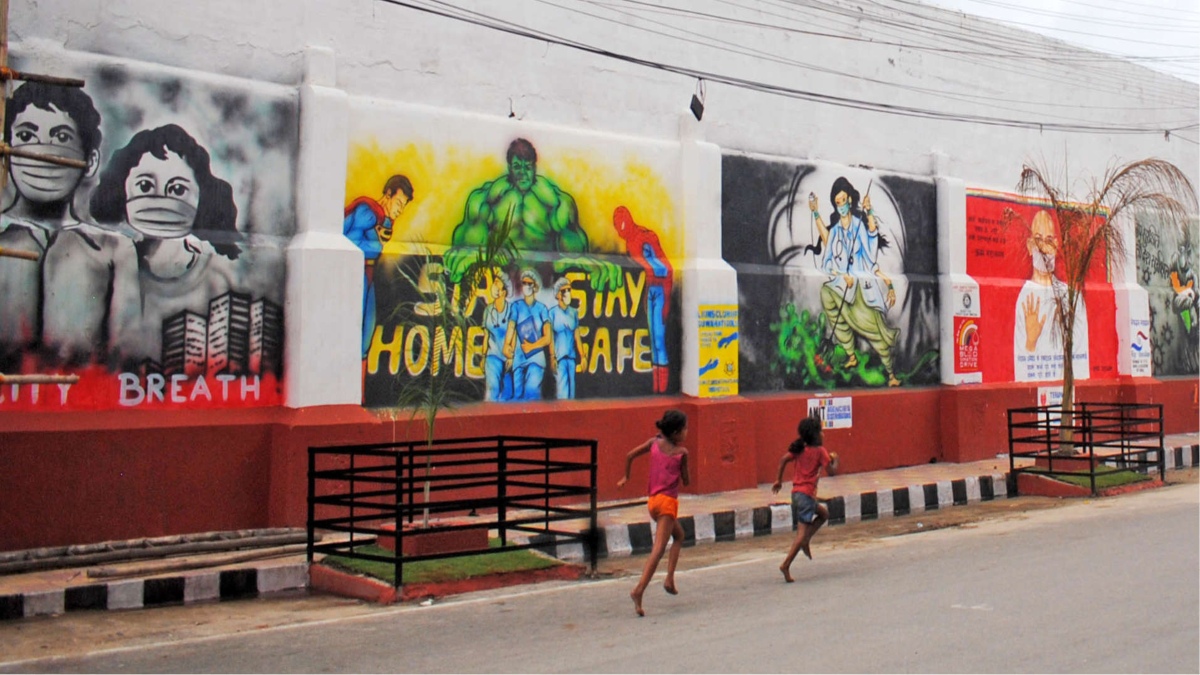


“There are very few hosts left to infect; let’s slow it down a notch” was a message that the infamous SARS-CoV-2 had sent to its brethren some time back in August this year. Then came a deluge of various investigational treatments—repurposed antivirals, convalescent plasma, steroids, and the list continues. “What doesn’t kill you, makes you stronger”—19thcentury German philosopher Friedrich Nietzsche’s aphorism is pretty much the mechanism of how SARS-CoV-2, or for that matter, any virus or bacteria survive in the face of adversity.
Think of how cockroaches, the ancient insects that have been around for some 300 million years, survive. They have been able to adapt to changing circumstances and survive the mass extinction that wiped out the dinosaurs, and now they are adapting to resist our efforts to eradicate them. Although cockroaches are known to eat just about anything, some roaches have adapted to sugar traps used by humans to kill them in our homes. To these roaches, glucose tastes bitter instead of sweet.
The adaptability of viruses is through mutations that are serendipitous random errors in their genetic code during the process of replication. The majority of these errors (point mutations) are detrimental for the virus and these lineages die out. But a few mutations offer some selective advantages and result in the evolution of new viral variants through natural selection—classic evolutionary theory! The new variants of SARS-CoV-2 (B 1.1.1.7, 501Y.V2 and others) that are now emerging out of the UK, Nigeria, South Africa and other countries are the result of a combination of lineage-defining mutations in the spike protein of the SARS-CoV-2, more specifically, in the receptor binding domain (RBD), increasing its affinity for the ACE-2 receptor, which is the port of entry into host cells. “You put up shields and I changed so that I can penetrate those” would be the virus’ sentiment in this regard.
So, should we be worried? Well, certainly yes—enough to get our guards up again, literally, in the form of physical distance, masks and hand-hygiene. There are too many unanswered questions now. For instance, is the rapid decline in COVID-19 numbers in India, across each and every state a true reflection of the slowing of transmission? Would it be possible that the new strain would completely displace the older one, like it is apparently happening in the Covid-19 resurgence in the UK? Or, are we already missing huge numbers in our test-trace-treat strategy? France reopened in May but adopted a strategy of testing, contact tracing and case isolation to keep the coronavirus in check.
To assess the results, Vittoria Colizza at the Pierre Louis Institute of Epidemiology and Public Health in Paris and her colleagues modelled Covid-19 transmission in France between mid-May and late June. They found that the national testing campaign missed some 90,000 people with Covid-19 who showed symptoms at a time when infections in the country were declining. The findings show that a low rate of positive test results does not always equate to a high rate of detected cases. The results also suggest that many people with symptoms of Covid-19 did not seek medical advice or testing. According to participatory surveillance data, only 31% of individuals with Covid-19-like symptoms consulted a doctor in the study period. This suggests that large numbers of symptomatic Covid-19 cases did not seek medical advice despite recommendations, as confirmed by serological studies (Pullano et al. Nature; 2020).
The reason why SARS-CoV-2 is so “successful” is because it has struck the fine balance between transmissibility and morbidity. If you were to ask nCOV2 for its mantra, in all probability, it would be something like: “Unlike my cousins Ebola and Zika, I don’t go for the kill straight away. I spread far and wide, insidiously, and then seek out the meek to kill”.
While scientists figure out whether existing testing methods and vaccines are effective against the new strains, the safest thing to do is to take all necessary precautions in the form of non-pharmacological interventions (NPIs). Current rules on safe physical distancing are based on outdated science. The distribution of viral particles is affected by numerous factors, including air flow. Evidence suggests SARS-CoV-2 may travel more than two metres through activities such as coughing and shouting. Rules on distancing should reflect the multiple factors that affect risk, including ventilation, occupancy, and exposure time (Jones et al. BMJ; 2020).
For instance, shouting or singing, the kind that we are likely to witness in indoor New Year parties, in a poorly ventilated room, can result in a high risk of transmission, even while wearing face coverings and contact for a short time. Thus, if “discretion is the better part of valor”, it would indeed not be a futile attempt at avoiding contracting Covid-19 if you stay home during the festivities and avoid large gatherings, while we wait for science to catch up with the many emerging idiosyncrasies of the novel coronavirus.
Acknowledgment: Elsevier India for their continuing support to clinicians and researchers to fight the pandemic with actionable knowledge.
The writer is the Regional Director, Head Neck Surgical Oncology and robotic surgery and the Associate Dean for Centre of Academic Research at HealthCare Global (HCG) Cancer Centre, Bengaluru.